A Conversation With Liza Johnson (RETURN)
(Return is now available on DVD and at Amazon Instant.)
Many films—both narrative and documentary—have been released in the past several years dealing with the emotional fallout of the Iraq and Afghanistan wars back home on American shores (The Messenger, Hell And Back Again, Stop-Loss, Where Soldiers Come From, just to name a few). But with Return, Liza Johnson brings something even more grounded—and in turn, wholly original—to the table. While she boldly switches the typical male protagonist role into that of a female soldier (played with award-worthy grace by Linda Cardellini), that isn’t even her most welcome decision. By choosing to not place war memories, or flashbacks, or any concrete manifestation of this young woman’s service in the foreground, Return plays like any other well-made domestic drama about a marriage on the rocks. Yet the reality is there all along: war wreaks havoc in the subtlest and most insidious of ways. After world premiering in the Director’s Fortnight sidebar of the 2011 Cannes Film Festival, Return was eventually picked up for distribution by Dada Films. It opens theatrically on Friday, February 10, 2012. In the days leading up to the film’s release, I spoke with Johnson about her commitment to telling this story in such a refreshingly restrained manner, how she was able to find the financial support to make it, and how good she thinks Linda Cardellini is in Scooby Doo 2.
Hammer to Nail: Was the idea for this film born out of some personal connection to the material—a friend or family member, say—or was it a broader inspiration that made you want to investigate this subject further?
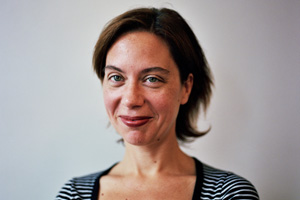 Liza Johnson: I guess probably both. I mean, the core of the idea came when a friend of mine was telling me about his efforts to stay married when he got back from Iraq. And, I don’t know, I just feel that military and civilian cultures are very separate and I live in a civilian culture. I think probably if you’re in a military family, the intimate account that he told me, what it was like for him to try to stay together with her after this big gap of experience and empathy had opened up. Even when people really want to bring that back together, I think that can be really hard to do. And I think if you’re in a military family you probably know that story, or at least some things about it. If you’re not in a military family, I guess you hear stories that are, like, statistical—“27 people died in a car bomb”—or policy type conversations—“pro this, con that”—that kind of stuff. And the story he told me felt fresh and unfamiliar to me. From that, I started working on this character of Kelli. He helped me meet a lot of other people too, especially women, and so after that it became research driven, but the starting point was how, in that encounter, his story felt so unfamiliar to me.
Liza Johnson: I guess probably both. I mean, the core of the idea came when a friend of mine was telling me about his efforts to stay married when he got back from Iraq. And, I don’t know, I just feel that military and civilian cultures are very separate and I live in a civilian culture. I think probably if you’re in a military family, the intimate account that he told me, what it was like for him to try to stay together with her after this big gap of experience and empathy had opened up. Even when people really want to bring that back together, I think that can be really hard to do. And I think if you’re in a military family you probably know that story, or at least some things about it. If you’re not in a military family, I guess you hear stories that are, like, statistical—“27 people died in a car bomb”—or policy type conversations—“pro this, con that”—that kind of stuff. And the story he told me felt fresh and unfamiliar to me. From that, I started working on this character of Kelli. He helped me meet a lot of other people too, especially women, and so after that it became research driven, but the starting point was how, in that encounter, his story felt so unfamiliar to me.
H2N: In doing the research, did you have trouble balancing the act of incorporating the stories of these individual female soldiers you spoke to while also never feeling beholden to the “facts” of their situations?
LJ: It was very simple because even from the very first women that I met, they had such widely differing experiences—reasons why they joined the military, what it was like for them while they were deployed, what it was like for them to go back—so there’s no way to honor a “representative person.” From that, it was clear that I had to make a character who was just very specific—and I hope plausible—but totally doing her own thing with her own characteristics.
H2N: There’s a huge chunk in the film where any reference to her being a soldier is absent, to the point where I almost forgot about that element and was processing this as an everyday domestic drama. It’s a really bold and original choice. I’m assuming that this was a primary motivation for you in making this film. Is that true? Like, was it a decision from very early on that you wouldn’t be drilling the point home through flashbacks or any other more obvious techniques?
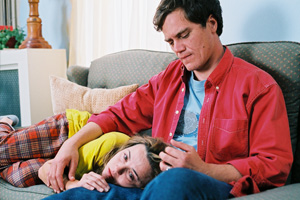 LJ: Totally. Thank you, I’m flattered by that. I understand why a lot of movies in that genre have flashbacks, ‘cause I think it’s a wish. Like, if you have a very different experience from other people, you’re like, “Here it is, transported to you in this perfectly transparent flashback,” or whatever. But I felt like the problem in the film is that you can’t do that. So I thought, “Okay, I won’t do that.” And I just feel that I’m interested in this kind of everyday… I think it is actually very dramatic, in small, everyday ways. And I don’t feel like it demands that kind of flashback in order to justify the rest of that story.
LJ: Totally. Thank you, I’m flattered by that. I understand why a lot of movies in that genre have flashbacks, ‘cause I think it’s a wish. Like, if you have a very different experience from other people, you’re like, “Here it is, transported to you in this perfectly transparent flashback,” or whatever. But I felt like the problem in the film is that you can’t do that. So I thought, “Okay, I won’t do that.” And I just feel that I’m interested in this kind of everyday… I think it is actually very dramatic, in small, everyday ways. And I don’t feel like it demands that kind of flashback in order to justify the rest of that story.
H2N: While that decision makes for a more interesting film, if you’re pitching it to investors, it definitely lands on the less flashy side of the spectrum. Was it difficult to get investors behind this plan of attack?
LJ: Well, once we found the right person then it wasn’t hard at all. Ultimately, we partnered with Abigail Disney’s company. She makes films this size, she has a feminist foundation, she has a PhD in coming-home-from-war narratives, and she just did this PBS series that’s basically about the everyday life of women on the ground in hot war zones and that idea of, not when they’re dramatized as a violent crisis, but when they’re lived in the everyday, how does that work, like in Liberia or Afghanistan. And so once we found a match it was very well understood why she thought that would be a good idea. Definitely, we met with some people who would compare the project to certain kinds of commercial practices that would maybe demand flashbacks or whatever, and, to be honest, those people also seemed very challenged that it would be a woman-led drama to start with, and that it would have any war thematics. And so, as with any movie, it was about finding the right person.
H2N: Finding “the right financier,” what a novel concept! [both laugh] With regards to location, your previous work has had a very strong sense of place and that seems like an important element for you. Was this script written with a specific location in mind and is that where you did, indeed shoot? Or did practical factors dictate you shooting somewhere else?
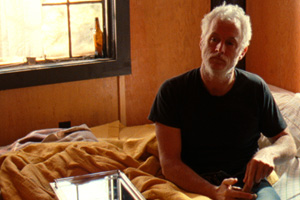 LJ: Both, I think. I wrote the script to resemble the place where I grew up in Ohio, where I actually did shoot a short film not long ago. And we weren’t able to shoot it there ‘cause we couldn’t travel there, and we benefited from New York tax initiatives. But that place where I grew up is this type of Ohio River steel town that has a departed industrial base, and physically it looks a great deal like Newburgh, which is a Hudson River town with a departed industrial base. Both of them have become big drug economies, although where I’m from is more oxycotton and crystal meth, and Newburgh is more cartel drugs and stuff. But the physical world really resembles the one that I came from, and that’s why I wanted to do it there.
LJ: Both, I think. I wrote the script to resemble the place where I grew up in Ohio, where I actually did shoot a short film not long ago. And we weren’t able to shoot it there ‘cause we couldn’t travel there, and we benefited from New York tax initiatives. But that place where I grew up is this type of Ohio River steel town that has a departed industrial base, and physically it looks a great deal like Newburgh, which is a Hudson River town with a departed industrial base. Both of them have become big drug economies, although where I’m from is more oxycotton and crystal meth, and Newburgh is more cartel drugs and stuff. But the physical world really resembles the one that I came from, and that’s why I wanted to do it there.
H2N: So it sounds like it wasn’t your vision but once you found this place, it also wasn’t a bitter compromise in any way.
LJ: I think it turned out good, but it did feel like a compromise to me, just because, I don’t know, I feel kind of intense about that one place and I would have really liked to shoot it there. But I think that the compromise was a good one. Also, it wasn’t like, “Well, would you prefer to do it there?” It wasn’t a choice. [both laugh] It turned out really well for the casting, too. For a while, we had been talking about doing it in Canada. We even scouted in Northern Ontario, and it was amazing. That town also looked exactly like where I grew up, but it had benefited from Canadian economic policy and still had an industrial base. Anyway, for various reasons we didn’t do that, and I’m especially glad about how that turned out in terms of the casting, because all these actors—there are a lot of awesome actors here—and they were willing to participate because it was a small commitment to go to Newburgh for a few days. And I feel like I got all these people that are headliner type of actors, like Paul Sparks and Talia Balsam, in pretty small roles, because we were near.
H2N: How long was the shoot overall?
LJ: It was 25 days.
H2N: Six-day weeks?
LJ: No, they were five-day weeks.
H2N: Speaking of the actors, and comparing this project to your earlier work, at what point did you know that you weren’t going to use nonprofessionals and that you were going to assemble an actual cast?
LJ: Well, I don’t know if it would have worked or not. I mean, I am actually really interested in nonprofessional actors. I kinda think they’re awesome. But I wanted to make something… it’s longer, it’s a really big sustained job for one performer, and basically the kind of work I wanted that person to do was the work of an actor, as opposed to the work of a non-actor, which I also admire. So, basically from the time I started writing it I thought it should probably be an actor.
H2N: How—or when—did you know that Linda Cardellini was the perfect person for the job?
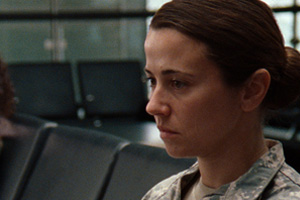 LJ: I met her one day in a casting situation and I was kind of like, “I think she’s my girl!” ‘Cause I think she’s a really warm actor, and very outwardly directed. There are people I think are good actors who are much more interior focused in how they read. I thought this character is not hyper-verbal, and she’s alone a lot, and it really needs to be someone who works like Linda, because I feel like [if we had cast] a more interior person, you might not have access to that person at all. So she always reads really warm, and when we talked I could see that she thought about the story and the character the way that I did. She was just super smart and very interested. Then, that night I actually had dinner with Raj [Roy, MoMA]. We know each other from the avant-garde and frequently when we see each other we’ll be like, “Ooh, did you see that Belgian movie from 1971?” [H2N laughs] And I was like, “I think Linda Cardellini’s my girl, what do you think?” And he was like, “Oh my God, did you see her in Scooby Doo 2?!” I had seen her in Brokeback Mountain, I had seen her in Freaks and Geeks. But I had not watched ER and so on, so I only knew some of her work. And that movie gave me so much confidence. Have you seen it?
LJ: I met her one day in a casting situation and I was kind of like, “I think she’s my girl!” ‘Cause I think she’s a really warm actor, and very outwardly directed. There are people I think are good actors who are much more interior focused in how they read. I thought this character is not hyper-verbal, and she’s alone a lot, and it really needs to be someone who works like Linda, because I feel like [if we had cast] a more interior person, you might not have access to that person at all. So she always reads really warm, and when we talked I could see that she thought about the story and the character the way that I did. She was just super smart and very interested. Then, that night I actually had dinner with Raj [Roy, MoMA]. We know each other from the avant-garde and frequently when we see each other we’ll be like, “Ooh, did you see that Belgian movie from 1971?” [H2N laughs] And I was like, “I think Linda Cardellini’s my girl, what do you think?” And he was like, “Oh my God, did you see her in Scooby Doo 2?!” I had seen her in Brokeback Mountain, I had seen her in Freaks and Geeks. But I had not watched ER and so on, so I only knew some of her work. And that movie gave me so much confidence. Have you seen it?
H2N: I haven’t, but in talking about your film since I watched it last week, her performance in Scooby Doo has been brought up multiple times!
LJ: She’s amazing. She’s like Carole Lombard funny, physical comedy, very expressive in non-verbal ways. And I just thought, “If she can do that, she can do my movie.”
H2N: Did most of your directing of her take place in pre-production? Like, by the time you were shooting had a shorthand been established so that you weren’t doing a ton of “directing” in that sense? For some reason, it feels that way to me.
LJ: Yeah. It turned out great that way, it turned out great. While we looked for Abigail Disney, we had at least a year where we knew each other. We didn’t work on it the whole time, but we talked about it. And she did her own research also. She met a bunch of different people. She worked at a VA for a while. We went together to a military base. All the women we met were really proud of their ability to handle weapons. There are no weapons seen in the film, but we went and took Linda to shoot guns because we just thought she should know what that feels like. We didn’t really have time to rehearse, per se, just ‘cause of the schedule, but I felt like we had had a lot of time to build that character and I think that her performance… in some way [that research] ends up on the screen. I don’t know how to say what that is. But the fact that she had that depth of knowledge from her research.
H2N: I agree completely with that approach. I mean, David Mamet’s take on directing actors—“Walk into the room and pick up the phone, then hang it up, then walk out”—is fine, but I personally believe that if you have someone who’s playing a soldier, they need to have some semblance of what that’s like. Maybe they don’t have to go to Iraq for a year, but still.
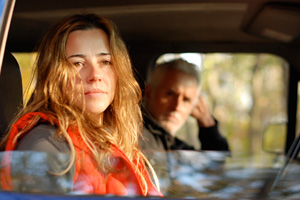 LJ: I think the one thing that it did was it was good for our collective confidence, that Linda knew certain things, and I knew certain things, and I knew she knew them. We ended up shooting in this very compressed time frame and had to rely a lot on reflexes—I wouldn’t say exactly improvisation—but certainly things we hadn’t planned. And so given that, I think it was good that we at least felt like we knew something together, you know what I mean? David Mamet might be right but at least we believed that we knew something so that was confidence building! [both laugh]
LJ: I think the one thing that it did was it was good for our collective confidence, that Linda knew certain things, and I knew certain things, and I knew she knew them. We ended up shooting in this very compressed time frame and had to rely a lot on reflexes—I wouldn’t say exactly improvisation—but certainly things we hadn’t planned. And so given that, I think it was good that we at least felt like we knew something together, you know what I mean? David Mamet might be right but at least we believed that we knew something so that was confidence building! [both laugh]
H2N: I think your visual style shows a similarly refreshing restraint. As with the storytelling, there is a naturalism but it never becomes self-conscious. How did you and your DP determine that was how you were going to approach it—assuming that this assessment is correct on my part!
LJ: I’ve shot several films with Anne Etheridge. I think she’s awesome, by the way, and you should use her. Do you like your person?
H2N: I do, but everyone’s not always available.
LJ: Well, call Anne because she’s awesome. But we’ve shot a bunch of things together before that are really in a documentary environment, even if we’re shooting fiction. And so, I don’t know, we have an easy way to communicate about that. If we had had a different circumstance, we might have made choices that appear more styled. But with the speed situation we were like, “Okay, let’s be handheld, but not to convey ‘reality’ but just because we only have time to set up you and not the tripod!” [LJ laughs] So basically we worked off of the breakdown that we made up, as if we could afford to put up a dolly, but then we couldn’t, so then we’d put her there and be like, “Take four steps.” ‘Cause I felt like the character could really use some support from the frame too. Like, how does she feel? Let’s let the frame tell you. And we aspired to a styled world that tells you something about her state from the frame. And as we ended up in a very compressed circumstance, I think that ended up being combined with something that felt grittier because of the speed factor. I don’t know if that makes sense.
H2N: That makes complete sense. To wrap things up, I’m wondering if you were exhausted or invigorated by the feature filmmaking process. Are you anxious to make another “bigger” movie like this one, or are you excited to get back into short format work with non-actors?
LJ: That’s a sweet question. I am just excited to keep working, honestly. I really like working. As we were just discussing, you have to really put yourself in a position to be able to work. So I just want to keep working, basically. I actually did just do a short film with nonprofessional actors in Northern Australia that I co-directed with a social theorist. We finished it on Tuesday and it will be in Berlin next week. And I am also working on future projects. The one I think will be next is based on an Alice Munro story. I didn’t write the adaptation; it’s written by this guy named Marc Poirier, who’s also a beautiful literary writer. And it’s a totally different story from Return but it’s also kind of a performance driven, everyday life story. I don’t know if you know her writing…
H2N: I love her.
LJ: It feels like life, but it’s a really forward moving, gripping drama that feels like it’s in your kitchen. So I think there are some threads of continuity from this project, but it’s a totally different story.
H2N: But it’ll still be in the realm of real actors and will be a bigger production.
LJ: Yeah. I don’t know how big but bigger than the one I shot in Northern Australia!
— Michael Tully








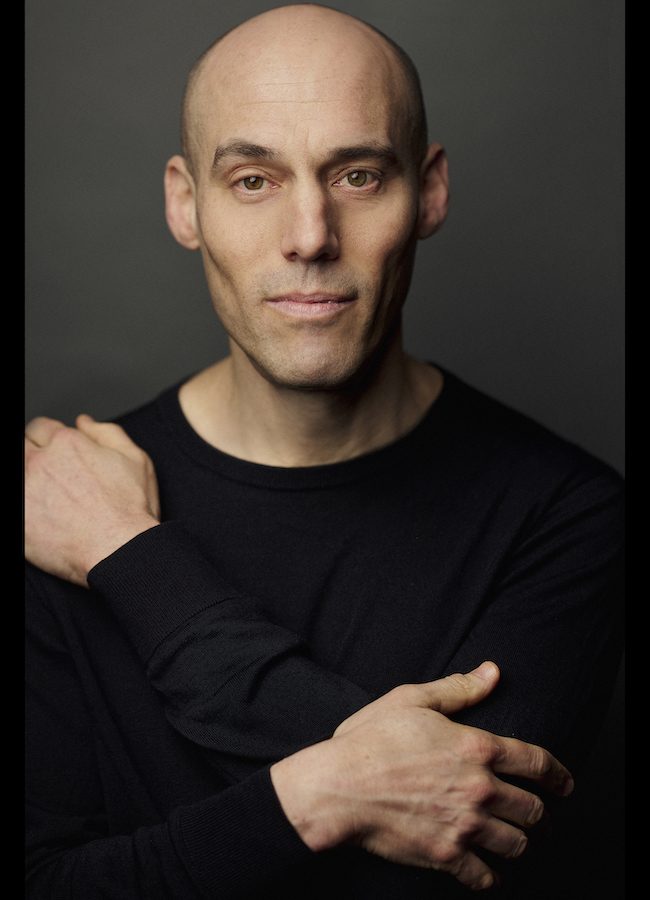
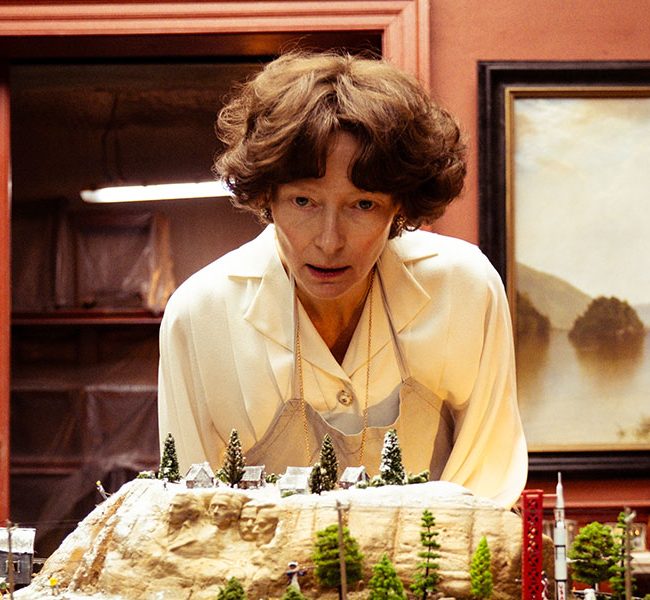


Pingback: HOME VIDEO PICKS – Hammer to Nail
Anonymous
Excellent interview with an excellent writer and director. The movie was great! Learned about by happentance, when I read an Ohio newspaper article about this film by someone who grew up in Porstmouth, Ohio, where I had worked a million years ago as a top 40-radio disc jockey. The whole idea of it — a female vet trying to readjust to smalltown life and that it starred Ms. Cardellini, had me hooked.